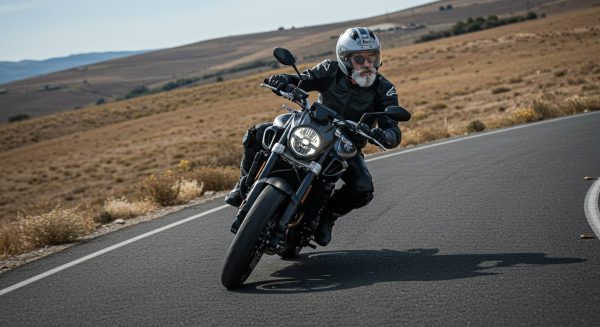Speed is one of the most critical factors affecting motorcycle safety, influencing everything from a rider’s ability to react to hazards to the severity of injuries in the event of a collision. According to the National Motorcyclists Council’s March 2024 report, motorcycle deaths have started to rise again in recent years, making it more important than ever to understand how speed affects rider safety.
Understanding Stopping Distances
When it comes to motorcycle safety, one of the most fundamental concepts is stopping distance. This consists of two crucial components: thinking distance and braking distance. The thinking distance is the distance your motorcycle travels from the moment you spot a hazard to when you begin to brake. The braking distance is how far you travel from the point you start braking until you come to a complete stop.
What many riders don’t fully appreciate is that these distances don’t increase in a linear fashion with speed. When you double your speed, your stopping distance increases by approximately four times. This means that what might be a near-miss at 30 mph could become a serious collision at 60 mph.
The Role of Reaction Time
Human reaction time plays a vital role in motorcycle safety. Even the most experienced riders typically need between 1 and 1.5 seconds to react to a hazard. At 30 mph, you’ll travel about 44 feet (roughly three car lengths) before you even begin to brake. Double that speed to 60 mph, and you’ll cover 88 feet during your reaction time alone – that’s more than the length of a tennis court.
Environmental Factors and Speed
The impact of speed becomes even more pronounced when environmental conditions are less than ideal. Wet roads, poor visibility, and uneven surfaces can significantly extend stopping distances. This is why the UK’s National Standard for riding motorcycles emphasises the importance of riding at a speed that allows you to stop safely in the distance you can see to be clear.
Speed and Corner Entry
One of the most challenging aspects of motorcycle riding is managing speed through corners. The DVSA’s National Standard for riding motorcycles and mopeds highlights the importance of assessing bends correctly on approach and selecting a safe position and speed to enter a bend. Many motorcycle accidents occur when riders enter corners too fast, leaving them unable to adjust their line if they encounter unexpected hazards such as oncoming vehicles, debris, or changes in road surface.

Impact on Observation and Planning
Higher speeds reduce the time available for scanning the environment and planning ahead. This is particularly important for motorcyclists, who need to be constantly aware of potential hazards such as vehicles emerging from junctions, pedestrians stepping into the road, or changes in road surface conditions. The faster you’re travelling, the less time you have to spot and react to these hazards.
The Relationship Between Speed and Injury Severity
While protective gear is essential, its effectiveness diminishes as speed increases. The physics are simple but sobering: the energy involved in a collision increases with the square of the speed. This means that a relatively minor incident at lower speeds can become life-threatening at higher speeds, regardless of the quality of protective equipment worn.
Making Better Speed Choices
The key to safer motorcycling isn’t about avoiding speed altogether but about choosing appropriate speeds for the conditions. This means considering factors such as:
- Your level of experience and familiarity with the machine
- Weather and road conditions
- Traffic density and behaviour
- Your own physical and mental state
- The capabilities and limitations of your motorcycle
By understanding how speed affects every aspect of motorcycle control and safety, riders can make more informed decisions about their riding speed, leading to a safer and more enjoyable motorcycling experience.
If you are thinking of getting a motorbike learner licence, you can learn the theory on this website.
